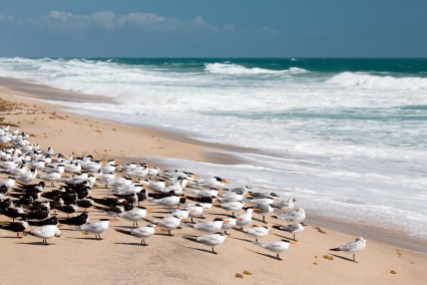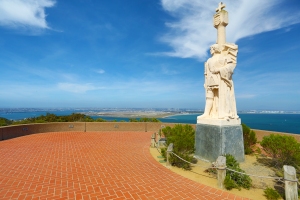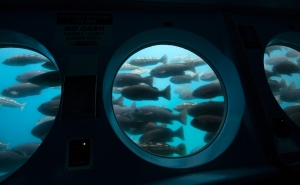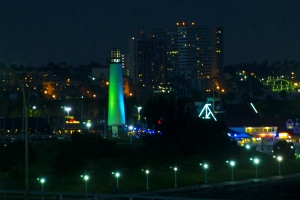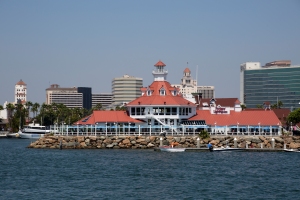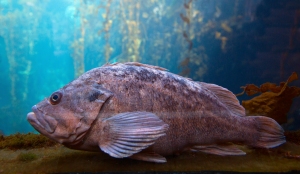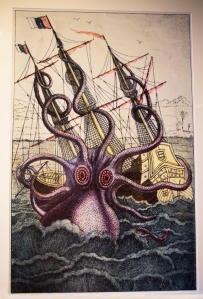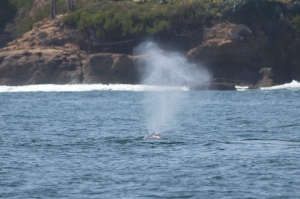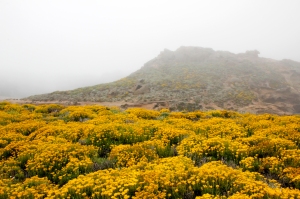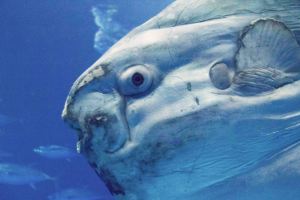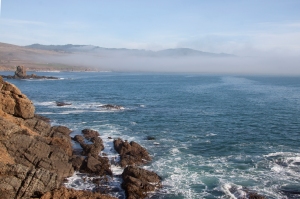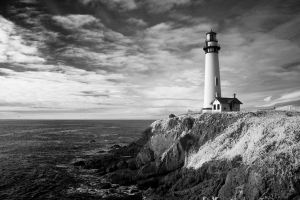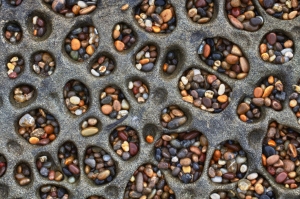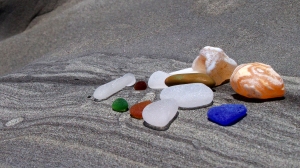
Piedras Blancas Elephant Seal Rookery

Alpha Male Elephant Seal

Mock Battles among Young Male Elephant Seals

Scuffle among Young Male Elephant Seals

Female Elephant Seal Face

Elephant Seal Family

Mother and Baby Elephant Seals

Very Young “Weaner” Elephant Seals Playing

Elephant Seal’s Big Eyes

Trio of Sleeping Elephant Seals

Backs of Sleeping Elephant Seals

Elephant Seal Flipping Sand to Cool Down

Elephant Seal Watching an Oystercatcher

Silhouette of Young Male Elephant Seals

Piedras Blancas is Named after White Rocks Offshore

Beautiful Piedras Blancas Coastline

Advice from an Elephant Seal
Elephant seals are fun to watch! They are one of our favorite animals. Ano Nuevo and Piedras Blancas in California are the only two places in the world where elephant seals come onto the mainland to have pups (elsewhere they breed on islands). The pupping season runs from December until March. The Piedras Blancas colony began in November 1990 when a dozen northern elephant seals came ashore near San Simeon (at the south end of Big Sur near the Hearst Castle). As of 2018 the Piedras Blancas elephant seal colony had grown to over 25,000 seals!
Elephant seals can grow up to 16 feet long and weigh up to 2 tons each. Males have trunk-like noses that grow up to 2 feet long. Their vocalization sounds like an outboard motor trying to start. Alpha males battle for dominance and gather up harems of females on the beach.
The babies are born with black wrinkled coats of fur. The black fur allows them to absorb warmth from the sun, and the wrinkled coat gives them room to gain weight quickly. Mother elephant seals lose one-third of their body weight while nursing. Their rich milk is as thick as mayonnaise! Babies grow from 80 pounds at birth to 300 pounds in 3 weeks. When the babies are 4 weeks old, mother elephant seals return to the sea to feed. Meanwhile the young “weaners” are left on the beach to play and swim. At 6 weeks of age the babies’ black fur is replaced by a silver coat.
Elephant seals have big round eyes that help them search for prey in the deep ocean. Dives for squid and fish last from 30-60 minutes, with only a 2-3 minute break at the surface. These mile-deep feeding trips go on continuously for months. Elephant seals return to the beach twice a year to either molt or breed. While on land they do not eat, and they often sleep to conserve energy.
Elephant seals maintain a body temperature of 100 degrees, which is quite a feat in the chilly Pacific Ocean. Their blubber keeps them so warm that they quickly overheat in the sun. They flip sand over themselves to cool down.
Elephant seals have one of the longest animal migrations in the world. Tracking devices have revealed that California elephant seals travel in a big loop that extends far west into the Pacific, north to Alaska, and then south back to the beaches they were born on.
The Piedras Blancas and Ano Nuevo elephant seal rookeries are well worth a visit. The animals are entertaining, and the scenery is fantastic! An excellent website by Friends of the Elephant Seal (including a calendar of activity) is at: http://elephantseal.org/
A live cam of the Piedras Blancas rookery is at: http://www.elephantseal.org/view.htm
